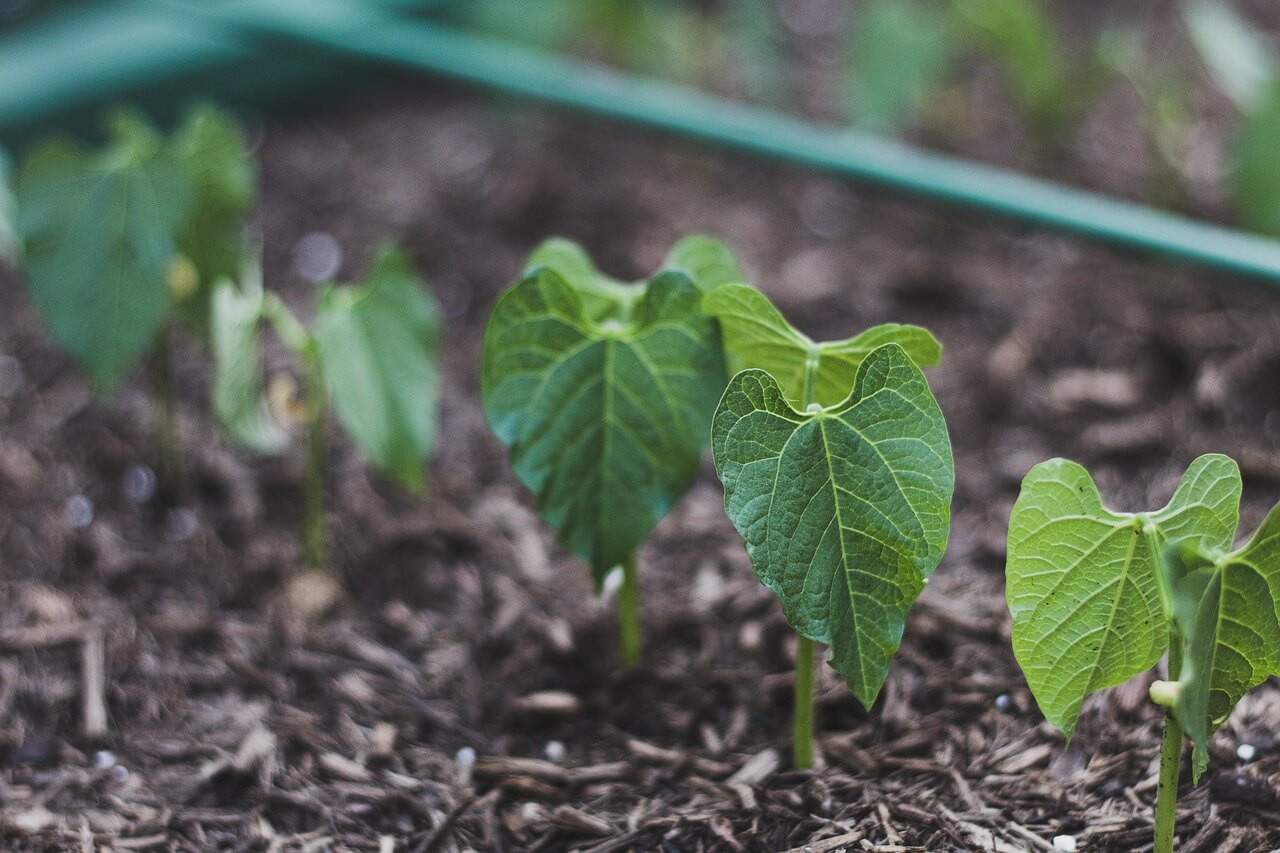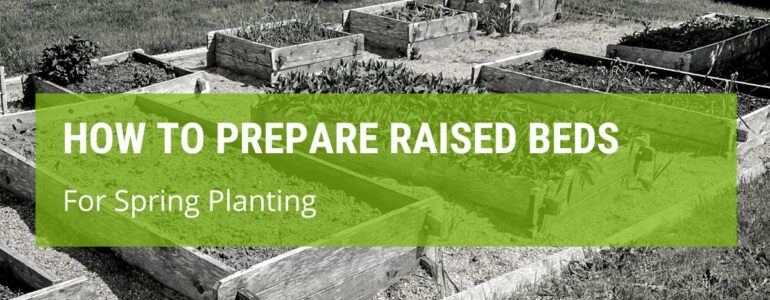Raised beds are a fantastic way of growing plants, whether it be fruits, vegetables or ornamental plants. But how to prepare raised beds for spring planting? I’m glad you asked! Here’s a comprehensive list of everything you need to do in order to get the best results.
How To Prepare Raised Beds For Spring Planting

Getting your ground prepared for the growing season is essential work, to ensure that you get the best results when you plant your plants!
Preparing raised bed for spring planting is easier than you may think, and just a little effort will ensure that you have the best crops possible.
- Clear the bed of any debris from the following year, and weed it well. Remove any large stones that may have risen to the surface.
- Add a mix of compost and mulch to the beds – this will ensure that any plants you grow will have a good source of nutrients.
- Check each raised bed for any damage that might have occurred during the winter, and do any necessary repairs.
- Remove any large roots that may have been left in the soil from the previous year, or have grown in from outside.
- Choose where you will plant your taller plants, and place any trellises or support that might be necessary.
- Check for any hibernating pests. Some creatures that like to munch on your plants will be asleep in the soil – removing them now will save you problems later.
- Test the soil. Soil testing kits are easy to find and to use, and can help you decide what to add to your soil for the best results.
If you’re a bit befuddled about raised beds, here’s a good article explaining briefly what you can do.
What To Add To Raised Bed Before Planting?
You should definitely consider supplementing your raised bed soil, because after a year or two growing plants it can become depleted of nutrients.
Adding some good quality well-rotted manure to your beds will help them to build up the nutrients ready to support your plants.
If the soil doesn’t contain any, consider adding some worms to it. These little guys are great for the soil!
If you are growing plants that like especially well draining soil, it is well worth mixing in some coarse sand or gravel, which will improve the drainage and prevent root rot.
Mix in a bit of compost, if you haven’t already, to ensure that your plants are getting enough nutrients.
Add some organic matter, such as sawdust or wood chippings, to give the soil some texture and to help with aeration.
Should I Fertilise Raised Bed Before Planting?
If you are dithering about whether or not to fertilise your raised beds then let me tell you right now that you absolutely should do so!
Fertilising your raised beds, whether you do so with manure, liquid fertiliser or mulch, is one of the very best things you can do for your beds.
Raised beds can run out of nutrients – they are generally smaller than garden beds, and they can have a lot of produce that can leach nutrients from the soil.
If you are thinking of fertilising your raised beds, consider doing this at the very end of winter or the very beginning of spring.
Fertilising at this time will allow the beds to settle before you start planting, and allow the nutrients to be fully released into the soil before you start the growing season.
You can choose from a whole variety of fertilisers; my first choice would be well rotted manure.
You can also use compost from your compost heap; just ensure it is rotted down into a lovely brown mulch, so you avoid burning your baby plants.
Shop bought fertiliser is also a good choice; check what types of fertiliser you buy though, as some may not be suitable for the type of plants you want.
Here’s a good video showing you how (and why) to fertilise your raised beds before you plant them up:
Can You Fill A Raised Bed With Just Compost?
Although it may seem like a good idea, it’s never good to fill your raised beds with just compost.
Raised beds, like all other types of soil, need a good blend of different types to ensure that they are balanced and able to support the plants you grow.
Compost will give your plants plenty of nutrients, it’s true, but it is also much more prone to washing away when it rains.
If your plants don’t have anything to grow in then they will certainly die, so you will need to ensure that the bed has a bit of body!
Compost should only be used at a ratio of 30-50%, to ensure that the soil has nutrients but is also able to support the plants.
Compost AND soil is the best environment for your lovely plants, so make sure you give them the best of both.
Should I Mix Topsoil With Compost For Raised Bed?
Yes, yes you should. A mix of compost and topsoil is actually the best thing that you can do for all of your plants!
Compost on its own is too light, and may contain too many nutrients for the plants that you are wanting to grow.
Topsoil on its own may be too heavy, and can prevent proper root development, especially if you are starting off small plants.
A mix of compost and topsoil is the ideal solution – good loose, well draining soil, plus some nutrients – your plants are going to be so happy they will reward you with a great crop of flowers, fruits or veggies.
A small disclaimer – I cannot guarantee that garden pests won’t also love your soil that produces such good plants!
Final Words
Once you have your raised beds well and truly established, you can grow just about anything in them.
Raised beds are simple to make and fill, and they are far easier to weed than the ground because of their extra height. Once you have started growing in them, you will never look back!



